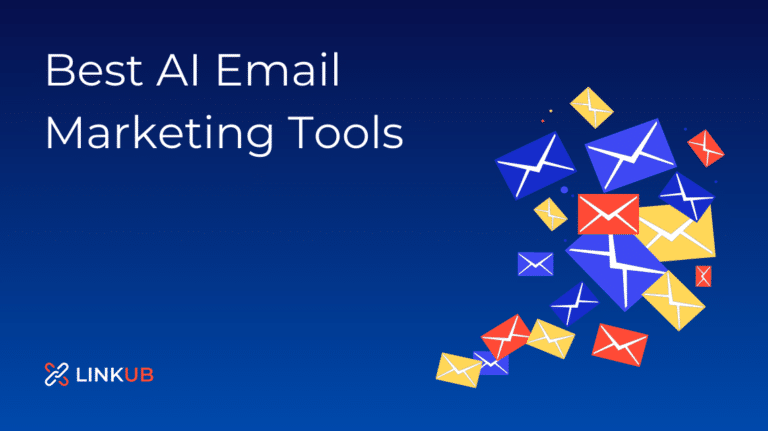100 Best Management Software in 2024
Are you drowning in the chaos of managing your inventory, trying to keep up with stock levels, and preventing product shortages?
We feel your pain. Did you know that the cost of poor inventory management in the US alone amounts to a staggering $1.1 trillion?
That’s why we’ve compiled this short and sweet listicle of the best inventory management software solutions to help you stay organized and satisfy your customers. Let’s get your inventory under control!
Top Inventory Management Tools
Do you have an inventory management tool?
Methodology
The ranking of the inventory management software is determined by considering several factors, including the number of citations and user reviews they have received.
Most Used Inventory Management Tools
1.
Ordoro is a robust inventory management software designed to streamline order processing, shipping, and inventory tracking for eCommerce businesses. Key benefits include:
- Centralized inventory: Manage all your sales channels, products, and stock levels in one convenient platform.
- Automation: Automate order processing, shipping label generation, and inventory updates to save time and reduce errors.
- Supplier management: Simplify purchasing and communication with suppliers by managing them within the software.
- Shipping discounts: Access discounted shipping rates with major carriers to save on shipping costs.
- Analytics and reporting: Gain valuable insights into inventory trends, sales performance, and supplier metrics to optimize operations.
Pricing: Free/Paid
Pricing page: https://www.ordoro.com/pricing

2.
inFlow is a comprehensive inventory management software designed to help businesses track products, sales, and orders across multiple locations. Key benefits include:
Easy-to-use interface: Manage inventory effortlessly with an intuitive and user-friendly platform.
Multi-location tracking: Monitor stock levels and product movements across warehouses or stores.
Streamlined order management: Simplify purchase order creation, sales order tracking, and invoicing processes.
Customizable reporting: Analyze your inventory and sales data with customizable reports to make informed decisions.
Scalability: Choose from various plans to suit businesses of all sizes and adapt to your growing needs.
Pricing: Free/ Paid
Pricing page: https://www.inflowinventory.com/software-pricing

Cin7 Orderhive is a versatile inventory management software that automates and streamlines operations across multiple sales channels and warehouses. Key benefits include:
- Centralized platform: Manage all inventory, orders, and shipping details from a single, user-friendly interface.
- Multi-channel integration: Connect seamlessly with eCommerce platforms, marketplaces, and POS systems.
- Real-time updates: Track inventory levels in real-time, ensuring accurate data and avoiding stockouts or overstocking.
- Automation: Automate order processing, shipping, and invoicing to save time and reduce manual errors.
- Comprehensive reporting: Access detailed analytics and customizable reports for data-driven decision-making and improved efficiency.
Pricing: Paid
Pricing page: https://www.orderhive.com/pricing-new.html

Zoho Inventory is a cloud-based inventory management software that simplifies tracking, order management, and warehouse operations for businesses of all sizes. Key benefits include:
- User-friendly interface: Navigate and manage inventory with ease using an intuitive platform.
- Multi-channel integration: Sync seamlessly with popular eCommerce platforms, marketplaces, and shipping carriers.
- Real-time tracking: Monitor stock levels in real-time to prevent stockouts and overstocking.
- Automation: Streamline order processing, shipping, and invoicing with automated workflows.
- Integration with Zoho ecosystem: Leverage the power of Zoho’s suite of business applications for a comprehensive solution.
Pricing: Free/Paid
Pricing page: https://www.zoho.com/inventory/pricing/

5.
Megaventory is a cloud-based inventory management software designed to help businesses track inventory, orders, and sales across multiple locations. Key benefits include:
- Multi-location support: Manage stock levels and product movements across warehouses or stores.
- Intuitive interface: Access a user-friendly platform simplifying inventory and order management tasks.
- Comprehensive reporting: Analyze real-time inventory data with customizable reports for better decision-making.
- Integration capabilities: Seamlessly connect with popular eCommerce platforms, accounting software, and shipping carriers.
- Role-based access: Ensure secure and efficient operations with role-based permissions and user access controls.
Pricing: Paid
Pricing page: https://www.megaventory.com/#pricing

6.
Upserve, now part of Lightspeed, is a cloud-based inventory management and point of sale (POS) software specifically designed for the restaurant and hospitality industry. Key benefits include:
Industry-specific features: Access tailored tools for menu management, recipe costing, and inventory tracking.
Real-time updates: Monitor stock levels and sales data for accurate and informed decision-making.
POS integration: Seamlessly integrate inventory management with Upserve’s POS system for streamlined operations.
Vendor management: Simplify vendor communication and purchasing with a centralized platform.
Comprehensive reporting: Analyze sales, inventory, and food costs with detailed reports to optimize your restaurant’s efficiency.
Pricing: Paid
Pricing page: https://upserve.com/pricing/

QuickBooks Commerce, formerly TradeGecko, is a robust cloud-based inventory management software that seamlessly integrates with QuickBooks Online. Key benefits include:
Centralized platform: Manage inventory, orders, and sales data across multiple sales channels and warehouses.
Real-time tracking: Monitor stock levels in real time, reducing the risk of stockouts and overstocking.
Automation: Streamline order processing, invoicing, and shipping with automated workflows.
Integration capabilities: Connect effortlessly with popular eCommerce platforms, marketplaces, and accounting software.
Comprehensive reporting: Gain insights into sales performance, inventory trends, and supplier metrics for informed decision-making.
Pricing: Paid
Pricing page: https://quickbooks.intuit.com/pricing/

8.
Katana is a modern, cloud-based inventory management software for small to medium-sized manufacturers and product-based businesses. Key benefits include:
Visual production planning: Get a real-time overview of your manufacturing operations using a visual interface.
Intelligent inventory tracking: Monitor stock levels, raw materials, and finished goods across multiple locations.
Integrated order management: Simplify order processing, fulfillment, and invoicing with a centralized platform.
Seamless integrations: Connect with popular eCommerce platforms, accounting software, and shipping carriers.
Scalability: Choose a plan tailored to your business needs with growth options as your operations expand.
Pricing: Paid
Pricing page: https://katanamrp.com/pricing/

Further reading
What Is Inventory Management?
Inventory management is tracking all incoming and leaving supplies and items. Almost every firm that creates or sells things keeps inventory on hand. Retail merchandise, for example, may be stored in a warehouse or shop by entrepreneurs. Manufacturers require assembly supplies and trace product circulation from warehouses to shops or sellers.

What Is the Best Approach To Keep Track of Inventory?
While there are several techniques for inventory tracking, inventory software makes inventory management more accessible and precise.
Many inventory management software alternatives are available, each with item tracking, warehousing, manufacturing, supply chain, and order fulfillment functions. As a result, the ideal inventory software for your business is frequently determined by the nature of your organization and its inventory requirements.
How Can Inventory Management Software Help My Company?
Choosing the best inventory management software system for your company may help you save time and money. Inventory software automates inventory management, allowing you to keep track of how much merchandise you have in store in real time. You may also combine inventory software with barcode scanning to expedite shipment processing in your warehouse.
Using inventory management software may help you save money and increase efficiency. It tracks when to restock and includes comprehensive reporting to see which goods are doing well. In some circumstances, inventory software may provide demand forecasting, allowing you to avoid the extra expense of excess inventory.
How Much Does Inventory Software Cost?
Most inventory software is now cloud-based, and you pay a monthly or yearly fee. Annual payments may be eligible for a 10% discount from software suppliers. Standalone inventory tools charge based on the number of orders. Still, POS systems with inventory capabilities provide tiered plans with a broader range of functionality as you progress to higher levels.
Furthermore, programs may restrict the number of users, warehouses, and shop locations. Again, while adding more terminals, POS systems charge additional costs. Inventory management solutions are available for free or a monthly fee of $300 or more. Higher-priced plans cater to businesses with significant sales volumes and may include additional features such as enhanced analytics, integration, or automation tools.
Wrap Up
And there you have it, our roundup of the best inventory management software solutions designed to streamline your inventory process and optimize stock levels.
These powerful tools help you stay organized and save time and money, boosting operational efficiency.
Remember, effective inventory management is critical for business success, so why not let these top-notch software solutions take the reins?
Explore these fantastic options, and watch your business thrive like never before!
FAQs
Inventory management software is a digital solution that helps businesses monitor, control, and optimize inventory levels. It automates tasks such as tracking stock quantities, reordering products, and managing suppliers, making the inventory management process more efficient and accurate.
Inventory management software can help your business by:
• Reducing human error in inventory tracking
• Preventing stockouts and overstocking
• Streamlining order processing and fulfillment
• Improving supplier management and communication
• Providing real-time inventory visibility and reporting
• Saving time and resources by automating manual tasks
The best inventory management software should have the following key features:
• Real-time inventory tracking and updates
• Multi-location and multi-channel support
• Barcode scanning and label printing
• Automated reordering and stock-level alerts
• Supplier management and purchase order processing
• Integration with other business software (e.g., accounting, sales, or e-commerce platforms)
• Robust reporting and analytics tools
• Scalability to accommodate business growth
Yes, inventory management software can be beneficial for small businesses as it can help streamline operations, reduce errors, and save time. Many software providers offer scalable solutions that cater to different business sizes and needs, so you can choose a system that fits your budget and requirements.
Most inventory management software is designed to integrate with other popular business tools and platforms, such as e-commerce platforms (e.g., Shopify, WooCommerce), sales and CRM systems (e.g., Salesforce), and accounting software (e.g., QuickBooks, Xero). Check with the software provider to confirm compatibility with your specific tools.
The cost of inventory management software varies depending on factors such as the provider, features, number of users, and the size of your business. Some providers offer subscription-based pricing, while others may have a one-time purchase option. Generally, you can expect to pay anywhere from $20 to several hundred dollars monthly for a subscription-based plan. Consider any additional costs for setup, training, and support services.
Reputable inventory management software providers prioritize data security and typically use encryption, secure data centers, and other measures to protect your data. It is essential to review the provider’s security measures and ensure they meet your business’s standards.
To evaluate and choose the best inventory management software for your business, consider the following steps:
• Determine your specific inventory management needs and goals
• Compare features and capabilities of different software solutions
• Assess the software’s ease of use and user-friendliness
• Verify the software’s compatibility with your existing business tools
• Research customer reviews and testimonials
• Take advantage of free trials or demos to test the software
• Consider the cost, including any additional fees for setup, training, or support
The time it takes to implement inventory management software depends on factors like the complexity of the software, the size of your business, and the level of customization required. It can range from a few days to several weeks or months. Some providers offer implementation assistance or training to help you get started.
You should expect support services such as user guides, tutorials, FAQs, and access to a dedicated support team via email, phone, or live chat to assist with any technical issues or inquiries related to the software.






